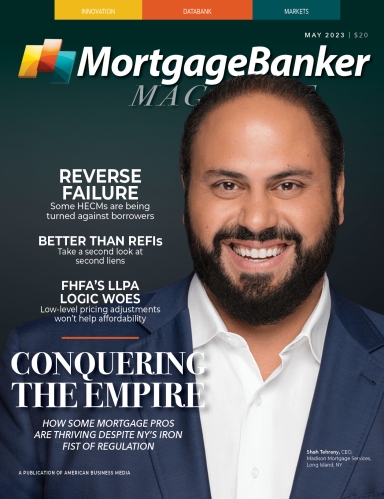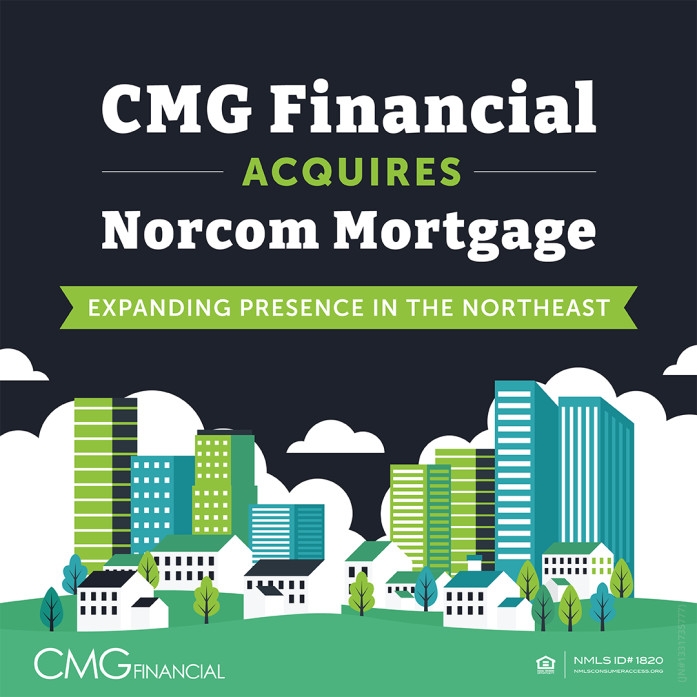According to the report, the Hambrics were approved for help from the Homeowner Assistance Fund (HAF), a program that is available to homeowners impacted financially by the COVID-19 pandemic. But, the report also notes that the HAF program was still trying to get verification from PHH to determine the balance needed to cure the default. The delay has the Hambrics worried that the assistance will fall through and they will end up in foreclosure.
Hambric told Mortgage Banker in a recent interview that it appears that the HAF program has managed to get PHH to sign off on the cure, but he added that their housing counselor is still having difficulty getting confirmation from the servicer. Asked where he thought the main issues were with his reverse mortgage, Hambric said, “It certainly ranks right up there that no one seems to know anything.”
Hambric said that as he looks back he feels that the loan originator he worked with was not qualified to sell HECMs and was only interested in the commission.
“They’ll tell you anything (to make the sale),” he said. “They only show you the best side.”
Champion and PHH did not respond to requests for comment.
A HECM Lender's Viewpoint
Michael Branson, CEO of California-based All Reverse Mortgage, Inc., said the issues brought to light in the report are real, but added that some are already being addressed.
“Many of the servicing issues we have known about and write about regularly in our blogs, from the larger servicers such as PHH, Champion - who bought all of Wells Fargo’s portfolio - and NOVAD, whose services for HUD have been well reported over the years,” Branson said. “HUD finally switched their servicing to CELINK - who has had some problems of their own as of late with their expansion - so we have hopes that they will get their act together.”
Branson added that some problems still need to be addressed. Borrowers and their heirs need to understand that a reverse mortgage is not a multigenerational loan, he said, and HUD should make borrowers aware of the assistance programs that are available in writing during the counseling process.
“We get borrowers contacting us years later for information and help with the servicing of their loans, even when we no longer own the servicing rights to their loans,” Branson said. “We have often only become aware of programs to help our borrowers through individual research.”
Beyond Poor Servicing
Beyond the criticism of the FHA’s monitoring of servicing, the NCLC found other problem areas for elderly borrowers and their families.
The report found that reverse mortgage borrowers who fall behind on property charges face significant hurdles to obtaining a narrow set of home retention options. Spouses who are not listed on the loan document can generally remain in the home if they keep paying the property taxes, but they are not eligible for loss mitigation if they fall behind. Too often, the report found, servicers also foreclosed based on non-occupancy when the borrower was still in the home.
According to the report, resolving those issues is particularly important because of the effect of preventable reverse mortgage foreclosures on the racial wealth and homeownership gap. The crisis of preventable reverse mortgage foreclosures does not impact all communities equally, the report said.
“Historically, people of color have been more likely to take out reverse mortgages, due to the legacy of discrimination and policies that limited their wealth-building opportunities, and they are also more likely to end up in reverse mortgage foreclosure,” the author wrote. “The heirs of reverse mortgage borrowers of color may lose significant home equity if they are not able to sell or refinance the home to satisfy the loan. When it comes to addressing the racial wealth gap and racial homeownership gap, reducing the number of preventable reverse mortgage foreclosures is an important and necessary step.”
According to the report, a 2019 USA Today investigation found that foreclosure rates on reverse mortgages were six times greater in communities of color than in majority white neighborhoods.
The NCLC and the Reinvestment Fund also conducted their own research using data obtained from the FHA through a Freedom of Information Act request.
The dataset showed reverse mortgage originations from 2001 to 2009 and foreclosures from 2013 to 2017 by zip code, with a goal of getting a sense of the volume of reverse mortgage originations in particular neighborhoods in order to have a baseline against which to compare the number of foreclosures.
Their study found that there is a clear pattern of more reverse mortgage originations and foreclosures in zip codes with more Black homeowners.
According to the study, 24% of originations occurred in neighborhoods where the population was more than 75% Black, but 89% of the foreclosures were filed there. In neighborhoods that were 50% to 75% Black, originations stood at 11% but foreclosures stood at 49%. In neighborhoods where the population was 25% to 50% Black, the originations were at 6.2%, but the foreclosure rate was at 23.3%, and in neighborhoods where the Black population was 25% or less, the origination rate was 3.3%, but the foreclosure rate was 21%.
The study also examined the ratio of foreclosures to originations by racial concentration of the zip code.
“We found that in zip codes that were less than 20% Black, that ratio was .18 (18 foreclosures in 2013 to 2017 for every 100 originations in 2001 to 2009),” the report said. “In zip codes that were 40% Black or higher, that ratio was close to double at .3 in zip codes that were 40-60% Black, .33 in zip codes that were 60-80% Black, and .28 in zip codes that were more than 80% Black.”
Missing Facts
Homeowners Assistant Funds, at-risk extensions and repayment plans are not well-known options to originators and they would be if they were part of the origination package.
Branson, from All Reverse Mortgage, said that his company has always advised potential borrowers that there were ongoing costs with reverse mortgages and that if they couldn’t live comfortably a HECM was probably not right for them. The company also tells borrowers and family members to discuss their plans and seek guidance from trusted legal and financial advisors
Branson added that it’s time for HUD to be more hands-on in the servicing role, at least from an oversight perspective.
“They have consistently contracted the servicing, and when issues arose, it was up to the servicer to resolve those issues,” he said. “Even on the loans that HUD owned, they defaulted to NOVAD and did not become involved in the servicing problems from all the feedback we received.”
Branson said that HUD has made an excellent first step in moving away from NOVAD, but suggested that they create a servicing review board that would allow them to review complaints such as the ones outlined in the NCLC report.
“HUD cannot start back-up servicing all the loans themselves. Still, borrowers should have a place at HUD where they can relay their concerns,” he said. “HUD can forward them to the loan servicer with the expectation that the servicer will keep HUD in the loop with solutions. Perhaps if the servicers become accountable for these abuses, and early on in the process, they will need to clean up their acts.”












